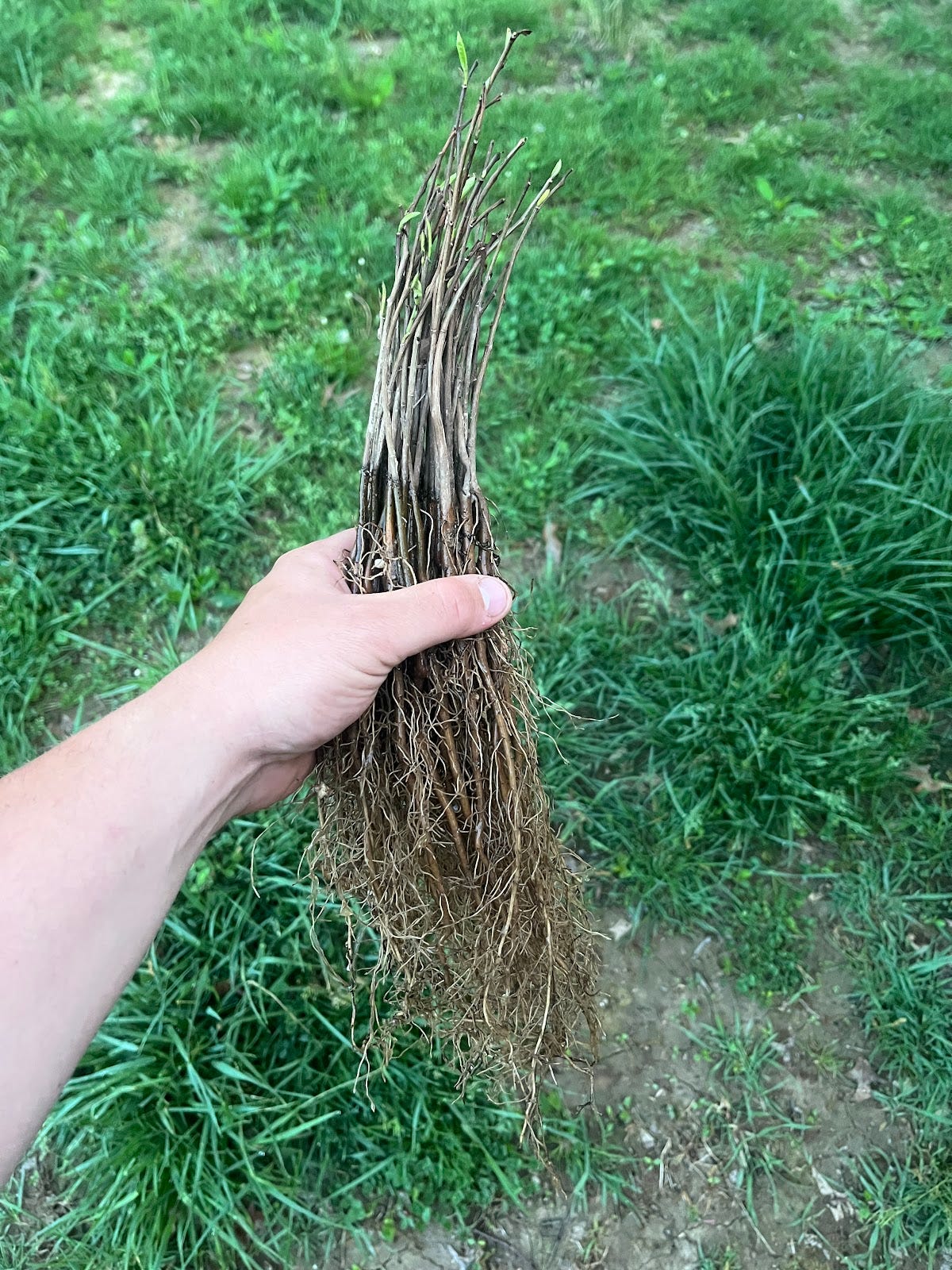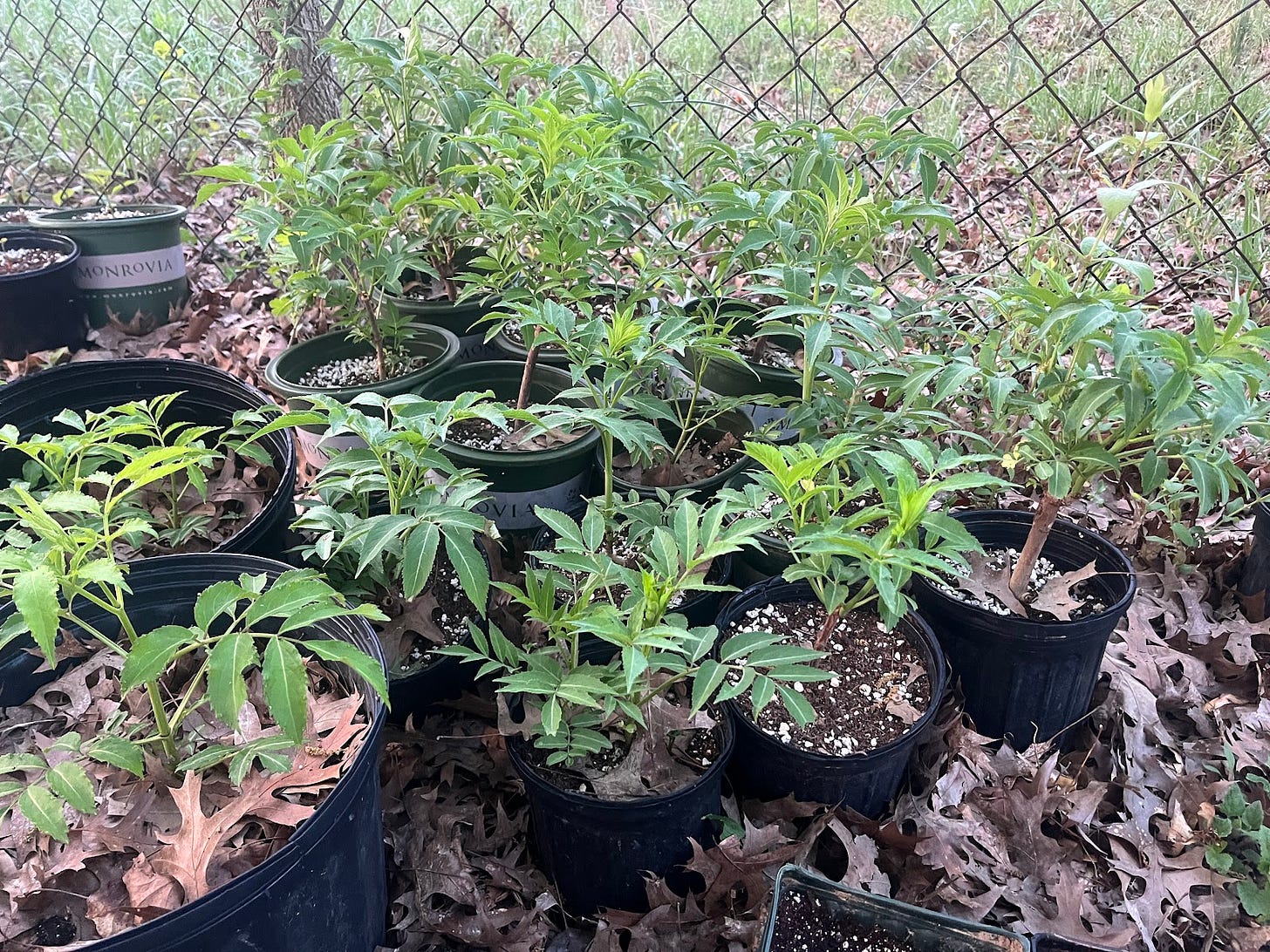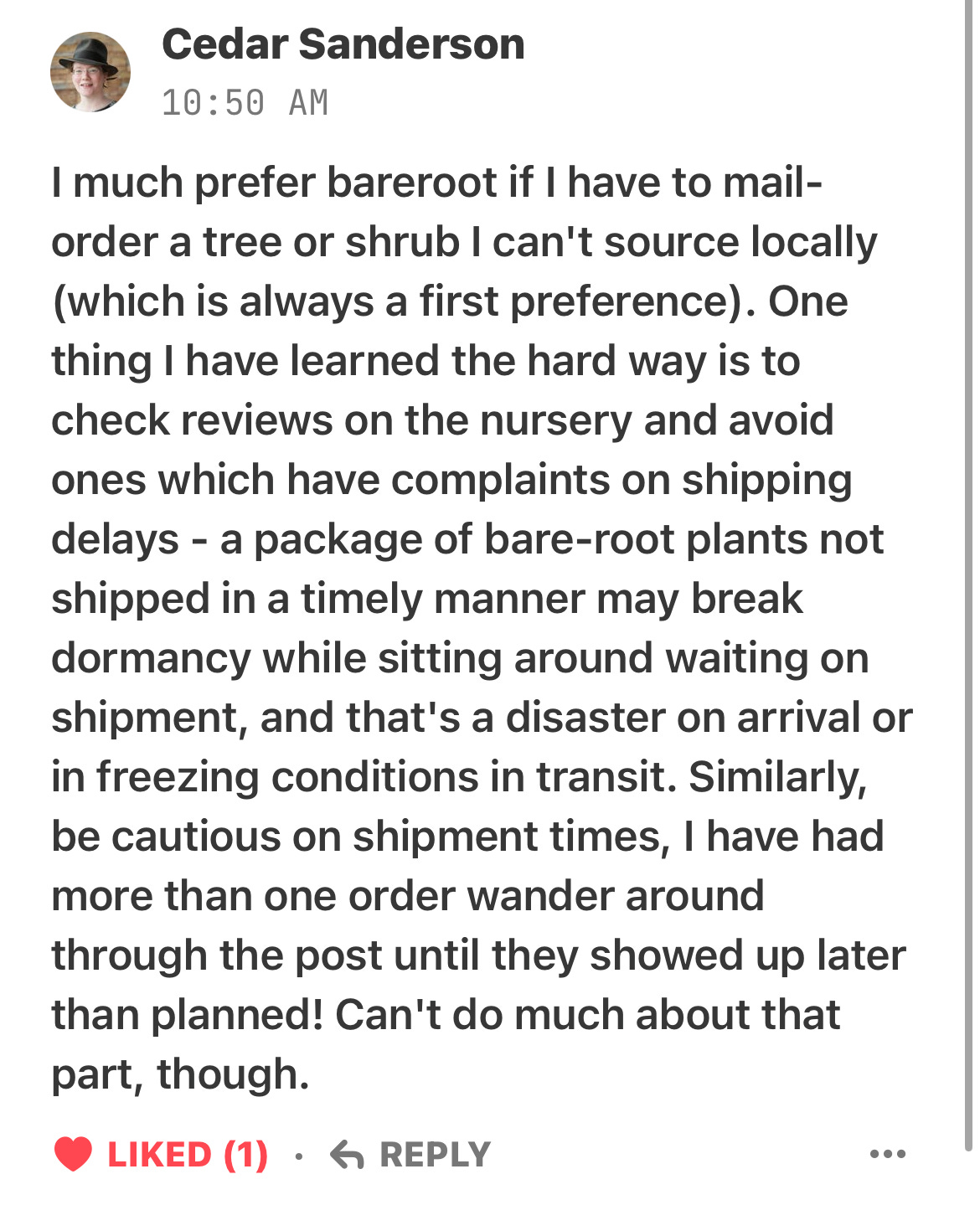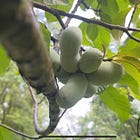“The Lord God took the man and put him in the Garden of Eden to work it and take care of it.”
— Genesis 2:15 (NIV)
"If you think the economy is more important than the environment, try holding your breath while counting your money."
— Guy McPherson
IM BAAAAAACK!
It’s been a couple of months since I last showed up in your inbox — and I just wanted to thank you for sticking with me while I sort through some things in my personal life. I took a short pause to regroup, dig into the soil (literally and figuratively), and I’m excited to return with the next installment in our bareroot vs. potted plant series.
Today, we’re talking money.
When it comes to building a thriving garden, every dollar counts. So let’s look at one of the most noticeable differences between bareroot and potted plants: cost.
Bareroot plants: The budget-friendly option
Bareroot plants are typically the more economical choice. Why? You're not paying for pots, potting mix, or the space they take up at nurseries. Growers can ship them more cheaply and in larger quantities, which means lower prices for you. In many cases, a bareroot plant can cost 30–50% less than its potted equivalent. The most I’ve ever spent on a bare root tree was about $15, while the cheapest ones I’ve bought were in bulk for just 60 cents each.
Potted plants: Paying for convenience
Potted plants cost more because you’re buying more than just the plant — you’re buying time. These plants come with an established root system, ready to go into the ground with less fuss. They’re a great option if you're looking for a bit more instant gratification or if you’re planting outside of bareroot season. These can get pretty pricey, ranging anywhere from $15–$20, up to $60–$75, and even as high as $200 depending on the plant and the nursery.
The Takeaway
When it comes to cost, bareroot plants are hands-down the more budget-friendly choice — especially if you’re planting in large numbers or working within a tight budget. They require a bit more planning and timing, but the savings can really add up.
Potted plants, on the other hand, offer ease and flexibility. You’re paying for a head start and the convenience of planting outside the narrow bareroot season.
At the end of the day, the best choice depends on your goals, your timeline, and how hands-on you want to be. Both have their place in the garden — it’s just a matter of what works best for you.
Community Engagement: Your Input Matters
This is the part of the newsletter where I like to highlight some of your past comments, hear your thoughts, and get your input on what you'd like to see next. Your feedback helps shape the direction of this series! Coming up, I’ve got three potential topics lined up, and I’d love to know which one you’re most excited about:
Let me know which one you’d like to read next by casting your vote and/or leaving a comment—I always enjoy hearing your thoughts!
Heres what my friend Cedar had to say in the introductory edition of this series:
Crop Profile Directory
If you’re new here or enjoyed reading this newsletter and want to dive deeper, here are the three most popular crop profiles from the latest series. Give them a read and let me know what you think—drop a like or leave a comment!
Thank you for being here with me on this journey of edible plants, sustainable practices, and the joys of nurturing local flora.
I’m looking forward to hearing your thoughts and suggestions! I’ll be back in your inbox next week! 👍🏼
Until then — happy planting,
Much love
Many blessings
Travis
P.S.
If you’re enjoying this newsletter, and want to show your support, I’d be grateful if you could share it with someone who might find this valuable.
Word of mouth is what fuels the growth of this newsletter. Your referral could inspire a friend or one of your followers to grow more food and make a positive impact in their community!










Welcome back! I enjoyed this chunk of information, certainly helpful to my “budget gardening” mindset this year.